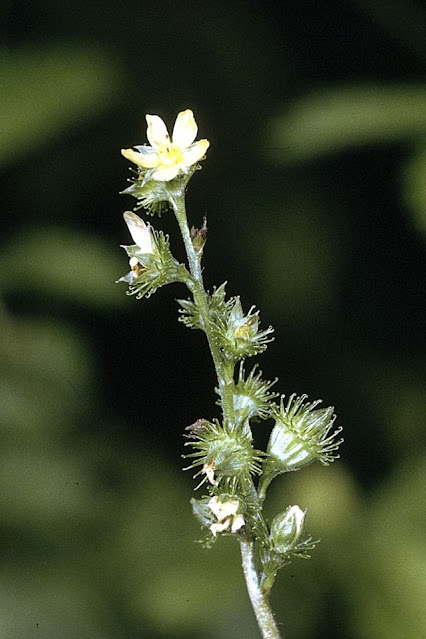Even though this plant is called "tall" the flower of this perennial plant in the rose family is rather small and delicate. Agrimony gryposepala is native to North America and has been used for centuries by indigenous people for a variety of medicinal purposes. This delicate yellow flower can be found in Connecticut.
About Tall Hairy Agrimony
This plant can be found across most of the United States and Canada except in the Rocky Mountains. When fully grown this plant is between two and five feet tall. The stems are light green and exude a spicy odor when crushed. The plant blooms in July and August and the flower has five petals with sepals in the flower which are separate and not fused. The yellow flowers bloom on a tall stem in an erect wand-like cluster above leaves that are divided into two or more leaflets with one leaf per node along the stem. The edge of the leaf blade has teeth. The stems are covered with spreading hairs which is the reason for one of its common names. Its root system is fibrous and the plant grows with rhizomes. It prefers to grow in the shade and is most often found in thickets, woods, soggy meadows, and swamps. The fruit of the Tall Hairy Agrimony is dry and doesn't split open when it is ripe. There are hooked barbs on the fruit that make burrs that can stick to clothes.
Medicinal Use
The Iroquois and Cherokees made an infusion from the roots and drank it to cure diarrhea and vomiting. The Cherokee also made an infusion of the root to build up the blood and to treat the pox. An infusion of the burrs was made to treat fever and an infusion of the root was given to satisfy the hunger of children. Cherokee participants in games of competition took Agrimony each day for seven days before a game to increase strength and clarity. The Iroquois made a decoction of the plant and took it as an emetic for "summer complaint." The Ojibwe used the plant for urinary problems, and the Meskwaki and Prairie Potawatomi used it as a styptic for nosebleeds. Many Native American communities used it to stop bleeding and it is still popular today as a mild astringent.
Did You Know...
This plant is also called common agrimony, hooked agrimony, or tall hairy grooveburr. The people in Appalachia call this plant liverwort, beggar lice, and cocklebur.
The species name means having hooked sepals.
The flowers are mainly pollinated by bees.
The leaves follow a pinnation pattern which is similar to the structure of a feather because of its pattern of branching of veins, lobes, and leaflets and how they grow along a center axis.



No comments:
Post a Comment